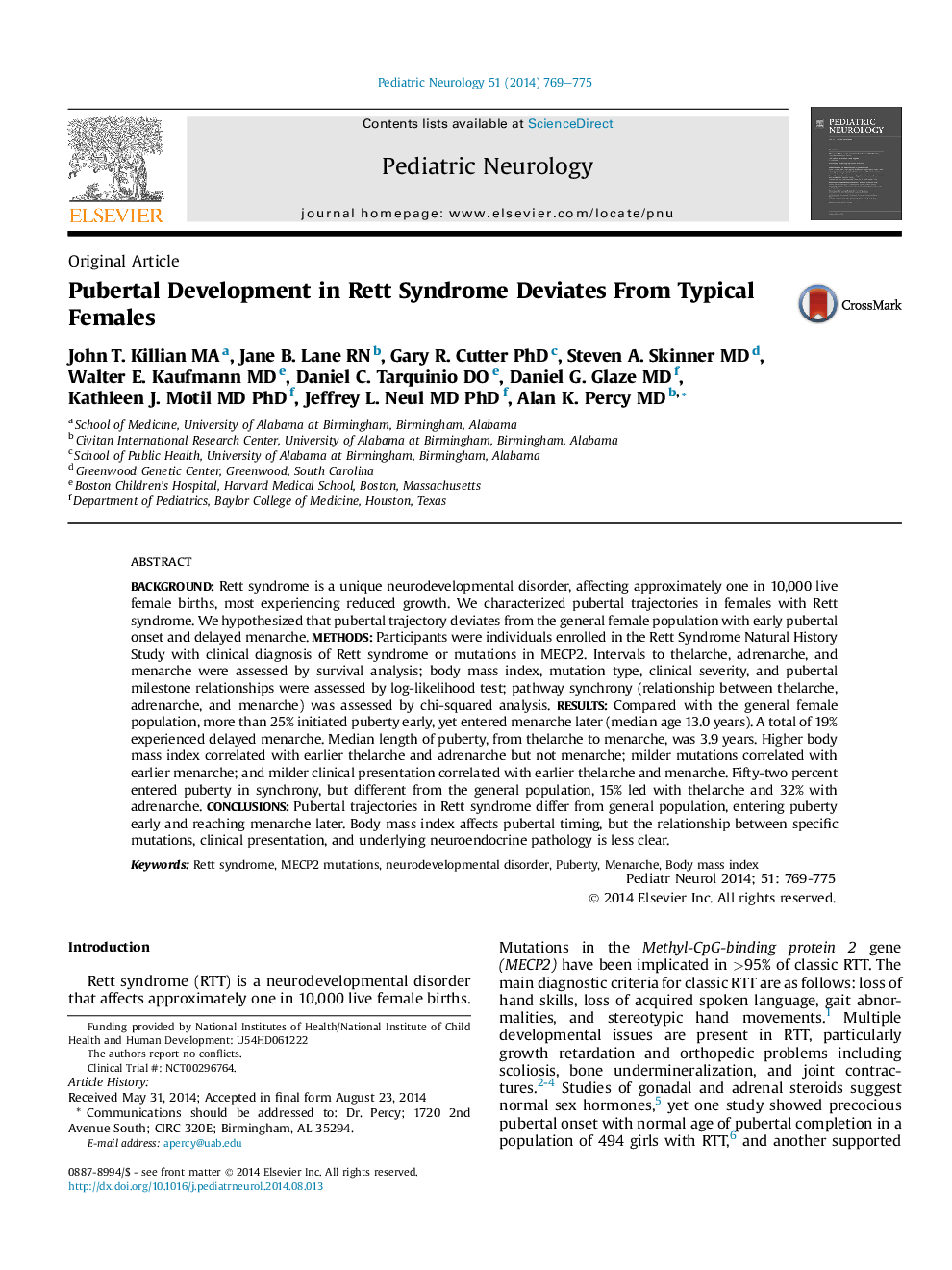| Article ID | Journal | Published Year | Pages | File Type |
|---|---|---|---|---|
| 6042298 | Pediatric Neurology | 2014 | 7 Pages |
BackgroundRett syndrome is a unique neurodevelopmental disorder, affecting approximately one in 10,000 live female births, most experiencing reduced growth. We characterized pubertal trajectories in females with Rett syndrome. We hypothesized that pubertal trajectory deviates from the general female population with early pubertal onset and delayed menarche.MethodsParticipants were individuals enrolled in the Rett Syndrome Natural History Study with clinical diagnosis of Rett syndrome or mutations in MECP2. Intervals to thelarche, adrenarche, and menarche were assessed by survival analysis; body mass index, mutation type, clinical severity, and pubertal milestone relationships were assessed by log-likelihood test; pathway synchrony (relationship between thelarche, adrenarche, and menarche) was assessed by chi-squared analysis.ResultsCompared with the general female population, more than 25% initiated puberty early, yet entered menarche later (median age 13.0Â years). A total of 19% experienced delayed menarche. Median length of puberty, from thelarche to menarche, was 3.9Â years. Higher body mass index correlated with earlier thelarche and adrenarche but not menarche; milder mutations correlated with earlier menarche; and milder clinical presentation correlated with earlier thelarche and menarche. Fifty-two percent entered puberty in synchrony, but different from the general population, 15% led with thelarche and 32% with adrenarche.ConclusionsPubertal trajectories in Rett syndrome differ from general population, entering puberty early and reaching menarche later. Body mass index affects pubertal timing, but the relationship between specific mutations, clinical presentation, and underlying neuroendocrine pathology is less clear.
